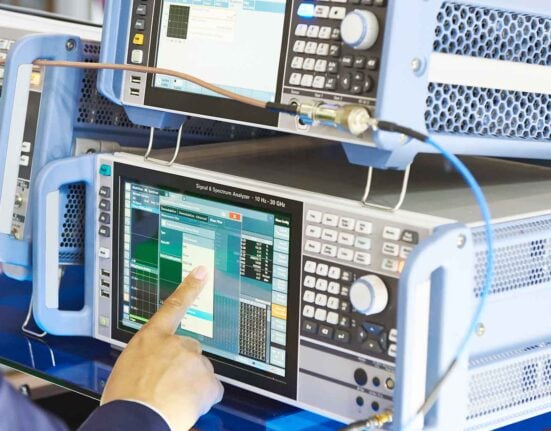Innoscience and United Automotive Electronics (UAES) announced the establishment of a joint laboratory to develop advanced power electronics systems for new energy vehicles using the advantages of GaN technology in size, weight, and efficiency. The two parties held a joint laboratory unveiling ceremony at UAES (Suzhou R&D Centre).
Due to the advantages of GaN technology over legacy silicon-based power devices, GaN power devices are widely used in electric vehicle, renewable energy systems, and AI data centre power systems. Compared with traditional silicon, GaN-based converters and inverters can reduce power losses by up to 10 times, significantly improving efficiency and power density, and reducing system BOM costs, thus achieving smaller size and lighter weight, and reducing carbon dioxide emissions.
Dr. Xiaolu Guo, Deputy General Manager of United Electronics, said: “We are pleased to work with Innoscience, which has been committed to the mass production of GaN technology since 2015. This cooperation will strengthen the cooperation between the two parties, including senior management. We have developed a high-power density on-board charger based on GaN. We look forward to continuing to strengthen our cooperation through this laboratory, boosting the innovation of GaN OBC solution.”
Dr. Jingang Wu, CEO of Innoscience, said: “We are pleased to establish a joint laboratory with UAES, a global leader in automotive electronics and a technology leader in wide bandgap power device applications. Innoscience has developed the industry’s highest performance and highest reliability GaN process, covering a voltage range from 15 to 1200V, and has the world’s largest 8″ production capacity. We look forward to working with UAES to fully leverage our strengths in GaN and contribute to GaN-based electric vehicle technology innovation.”
Due to its material properties, GaN can achieve new standards of system performance in power conversion, significantly reducing losses, thereby improving efficiency, reducing volume and weight, and thus reducing system costs. The application range of GaN power devices has far exceeded consumer electronics, and has been mass produced in data centres, industrial and photovoltaic equipment, and has been used in electric vehicle power electronics systems.













